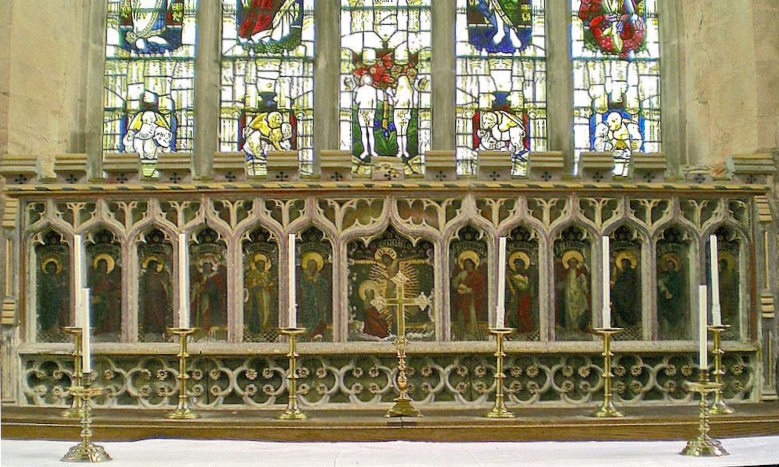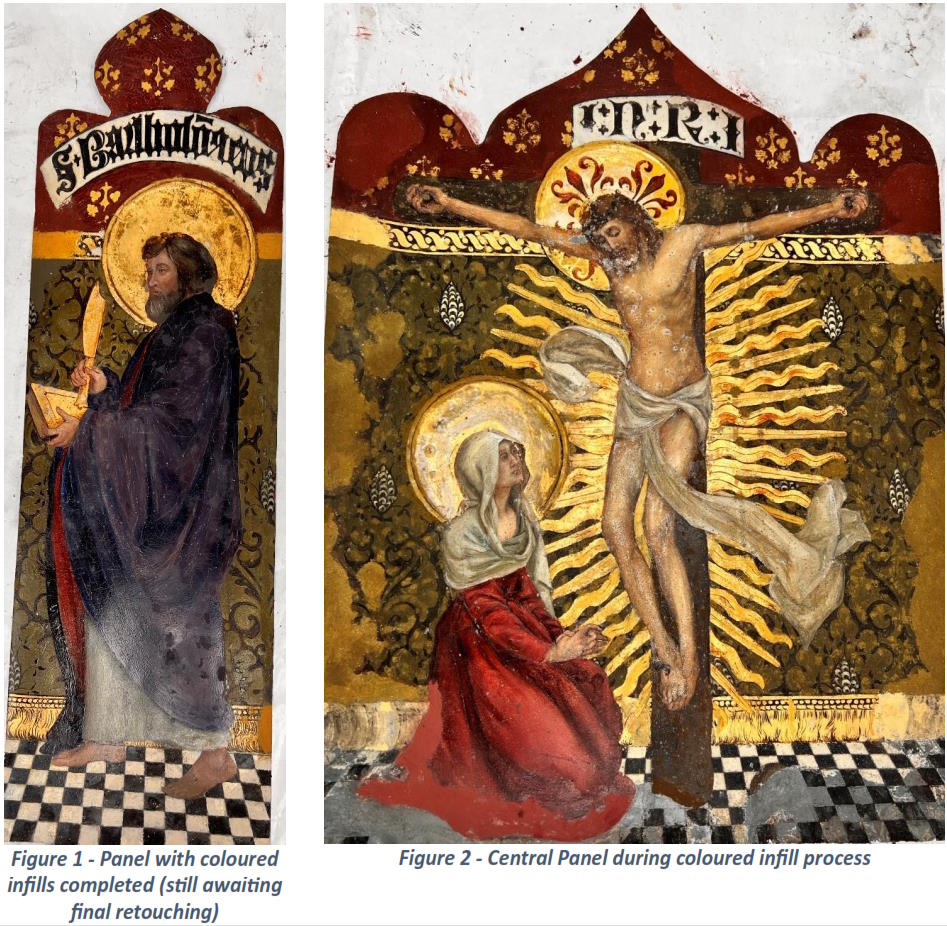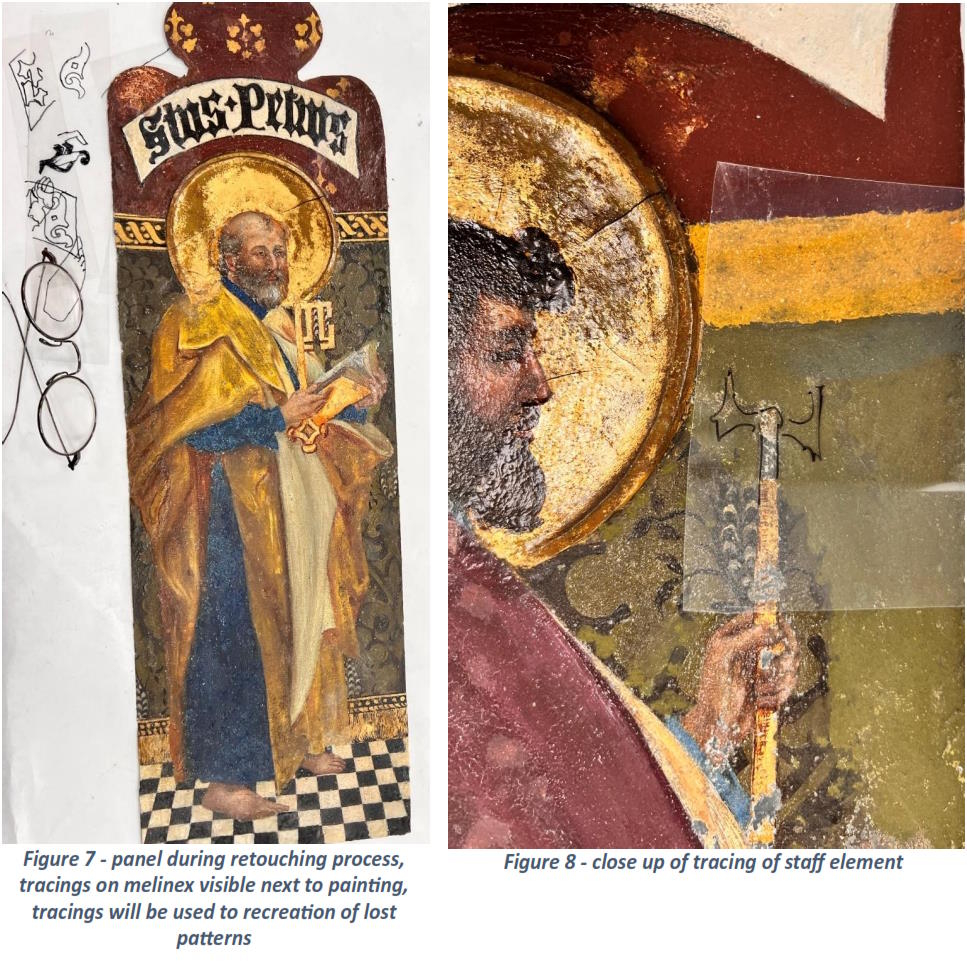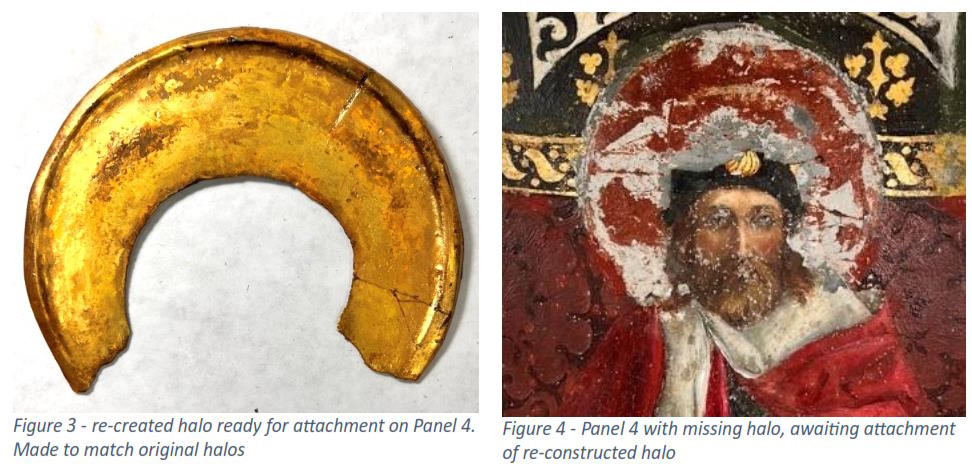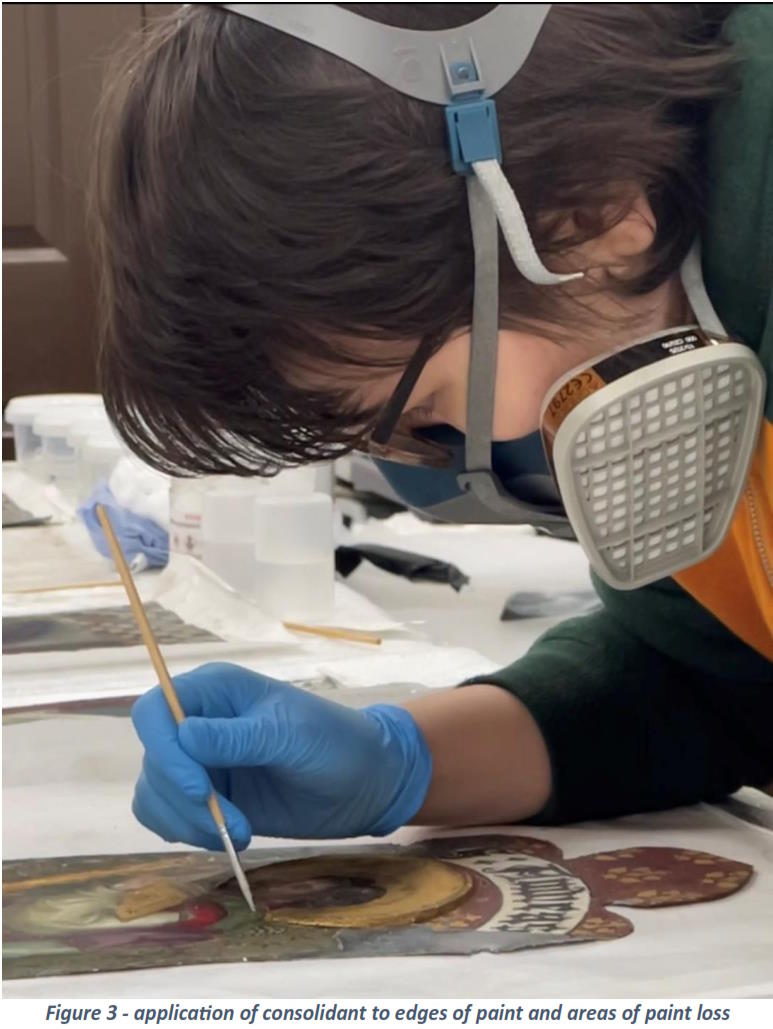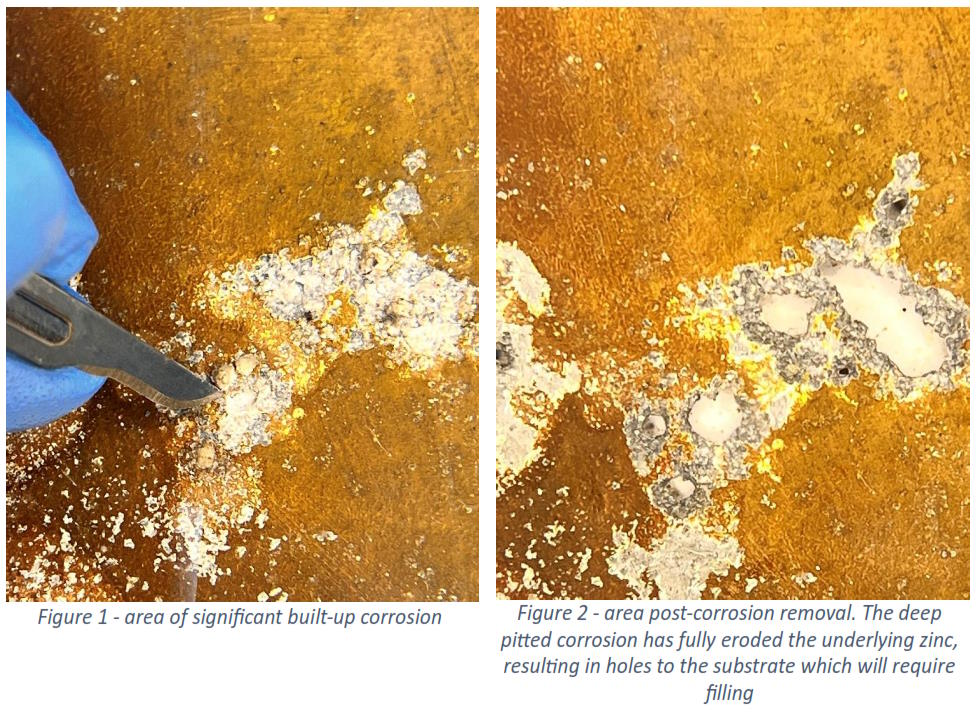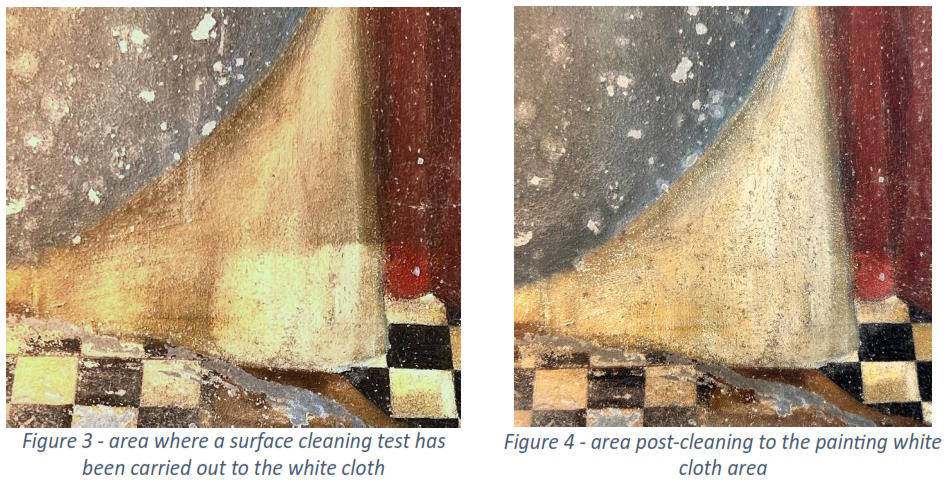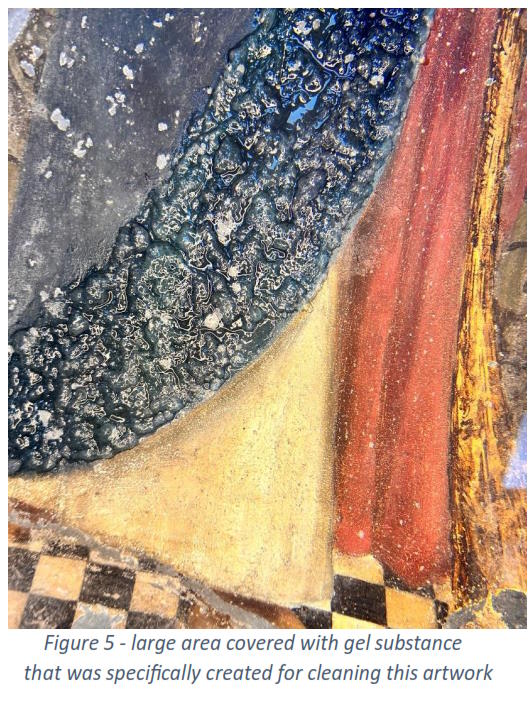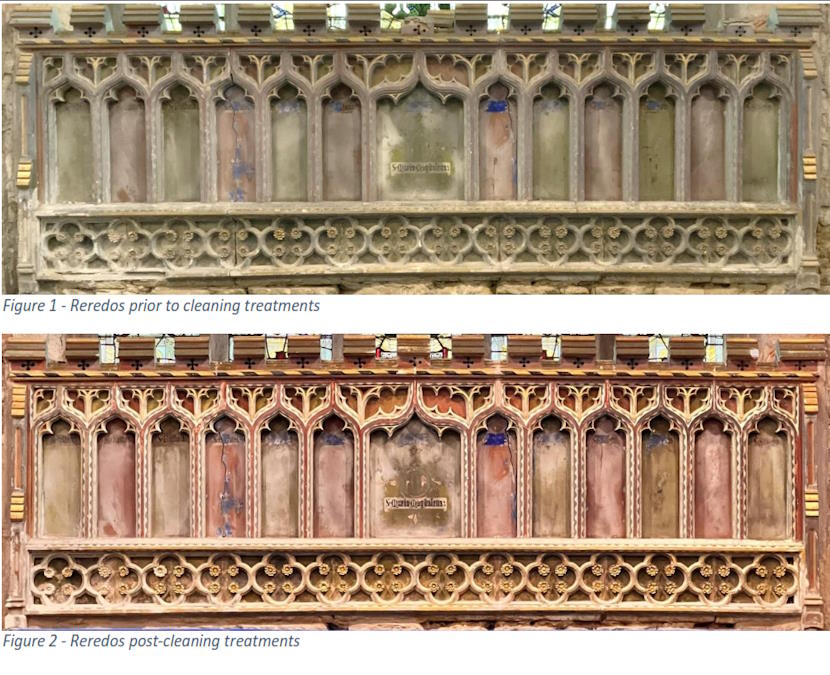Conservation treatments have recently been carried out to the East Window. This has improved the clarity of the window through removing years of built-up dirt and dust via gentle cleaning of each individual glass fragment. The original colour brilliance is now visible, along with enhanced legibility of the painted details, with the light able to shine through the window as originally intended.
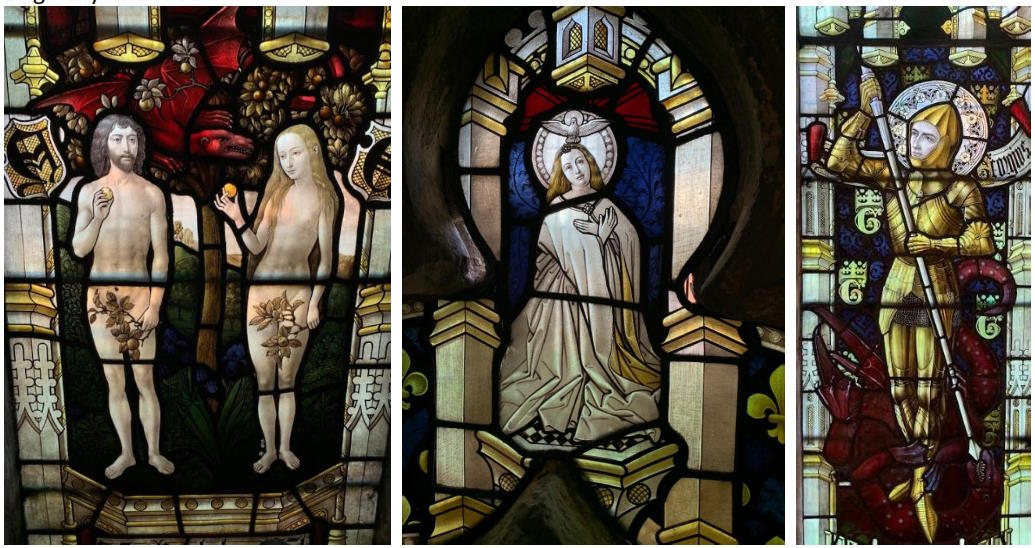
Figure 1 - examples of finely painted linework and tracery
The stained-glass window has dual functionality as a work of art and practical weather barrier, which means breaks can be a common occurrence within glass pieces. The most fragile breaks and areas of loss within the East Window were repaired in situ. Where spider cracks were present, glass fragments were in danger of dislodging from the lead matrix. For these areas, strap leads were applied to hold the fractured pieces securely in place.

Figure 2 - spider crack before (left) and after being mended with strap leads (right)
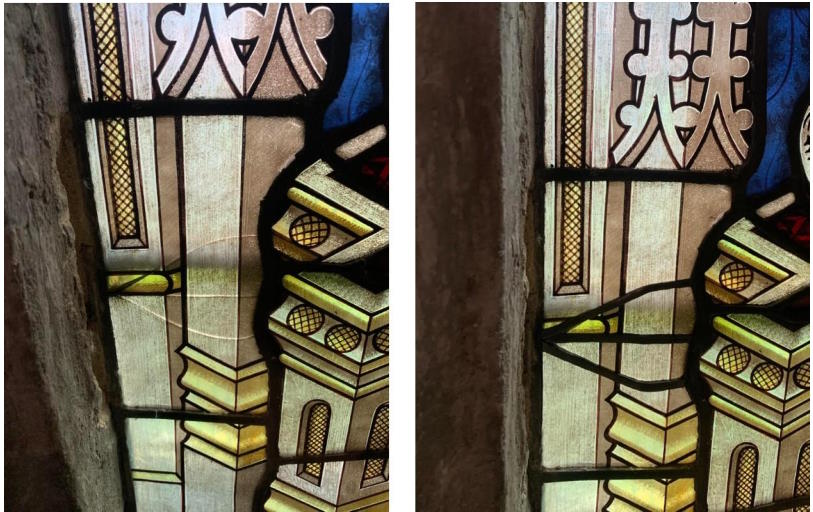
Figure 3 - break with multiple cracks (left) mended with strap leads (right)
A silicone infill was created for a hole in order to flexibly retain all glass pieces, and a strap lead used to securely hold. This allows the area of loss to blend cohesively. The window now remains weather-tight and stable.

Figure 4 - hole and multi-crack (left) mended with silicone infill and leads to blend repair with overall lead matrix
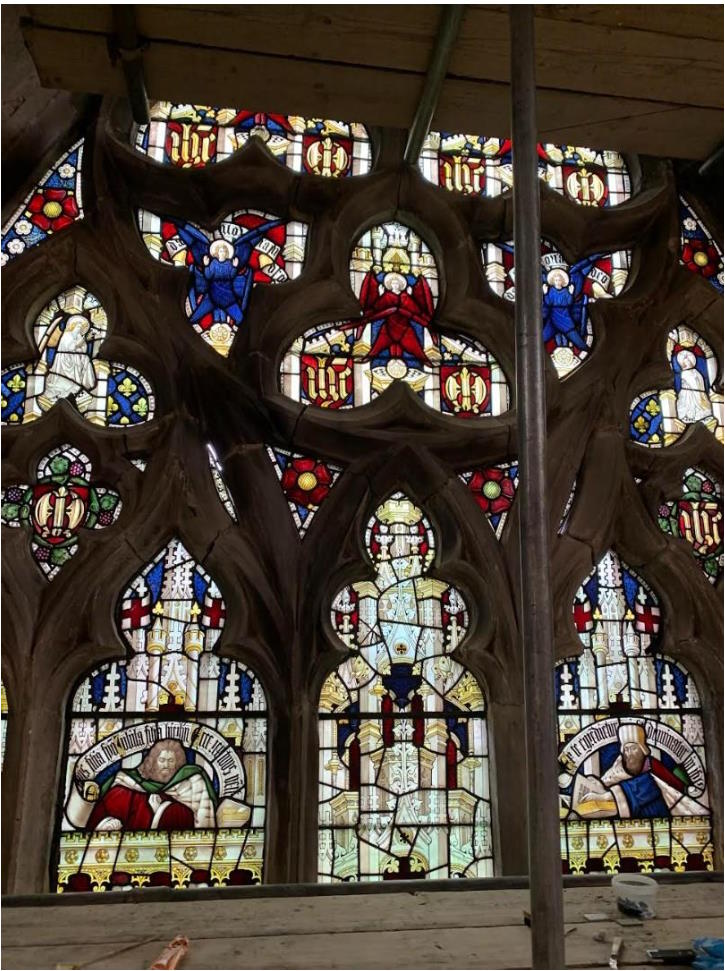
Figure 5 - scaffold access allowed for cleaning of even the highest and inaccessible elements to be treated













